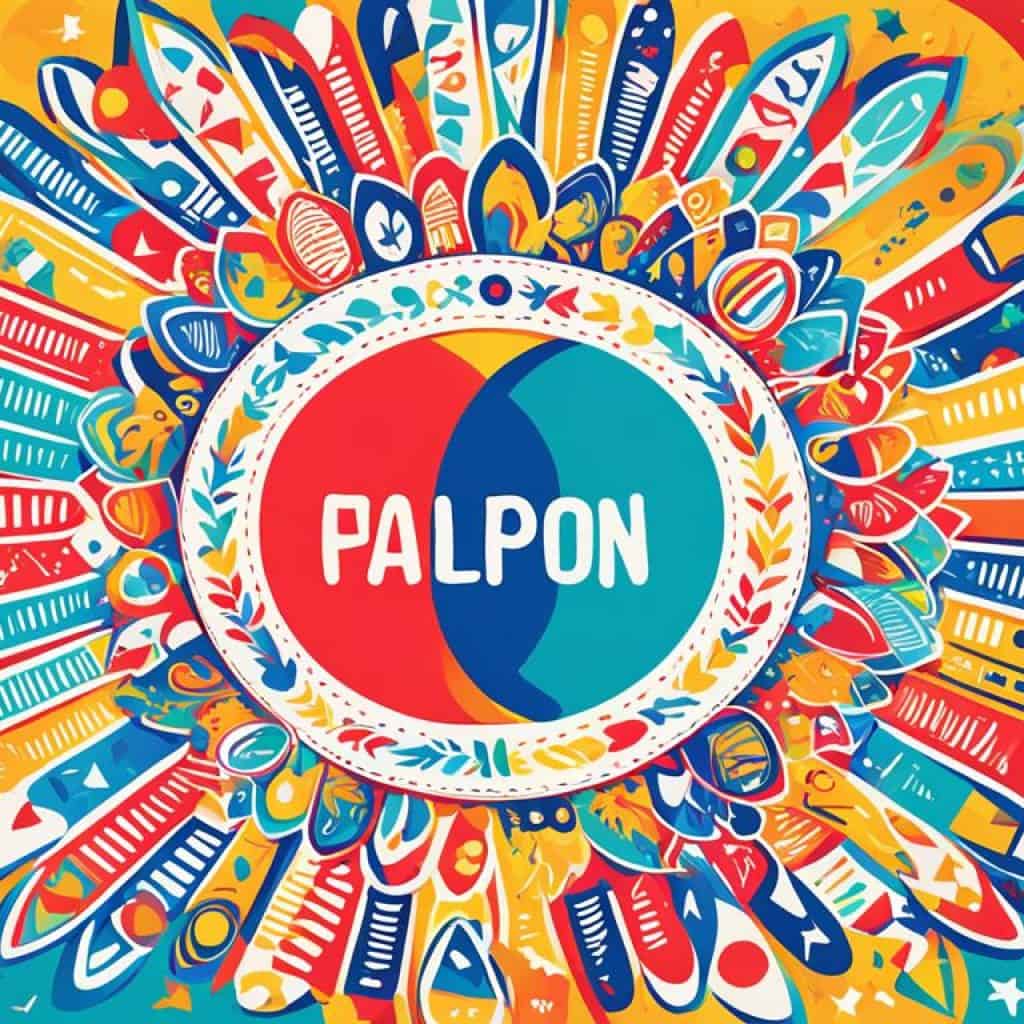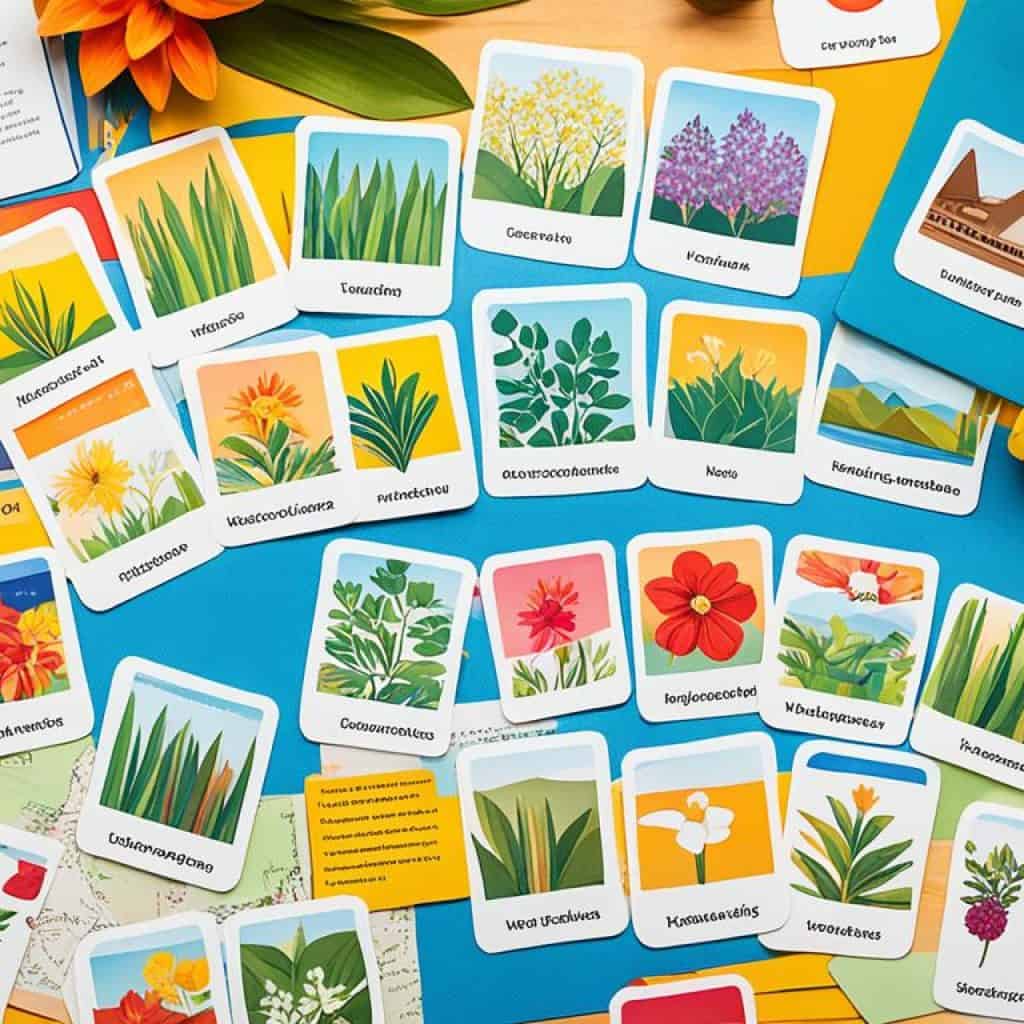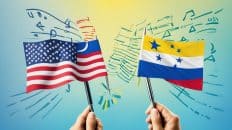Have you thought about the many languages spoken in the Philippines? This country has a rich mix of languages, from official ones to many dialects. But what is the main language? Is it Filipino, Tagalog, or both? How do local languages fit in?
We’re diving deep into the language scene of the Philippines. We’ll look at official languages, how history has shaped language use, and Tagalog’s unique traits. This guide will also cover the major native languages and the wide range of dialects. Get ready to explore the Philippines’ language landscape!
Key Takeaways:
- The Philippines holds a vast linguistic heritage with Filipino and English as the official tongues.
- Tagalog plays a significant role within the Filipino language family but is distinct from Filipino.
- With its many regional languages and dialects, the Philippines showcases a vibrant linguistic diversity.
- Understanding the Philippines’ language opens doors to cultural insights and new personal and professional ties.
What Language Is Spoken in the Philippines?
The Philippines is rich in languages, with Filipino and English as its official ones. Filipino is mainly developed from Tagalog and unites the country. English is key for government, education, and business.
Filipino, or Pilipino, is the main language. It comes from Tagalog, mostly used around Manila. It helps people from different areas communicate easily.
Many Filipinos speak English fluently. It stands equal to Filipino and is crucial in various fields. Filipinos often switch between English and Filipino, showing their bilingual skills.
The Philippines has a colorful mix of languages, showing its cultural depth and colonial history. Besides Filipino and English, there are many regional languages. Cebuano, Ilocano, Hiligaynon, and Waray-Waray are a few, each special in its own way.
This mix of languages makes the Philippines’ cultural landscape very special. It adds to the country’s rich identity.
| Native Languages | Regions |
|---|---|
| Cebuano | Visayas, Mindanao |
| Ilocano | Ilocos Region |
| Hiligaynon | Western Visayas |
| Waray-Waray | Eastern Visayas |
| Kapampangan | Central Luzon |
The Role of Colonisation in Language Adoption in the Philippines
The Philippines has a rich history shaped by many years of colonization. Spanish and English have deeply influenced language use in the country.
“For more than 300 years, from the 16th to the late 19th century, Spain ruled the Philippines. Spanish became the official language.”
Spanish was the language of government, education, religion, and trade. It played a big role in Filipino culture and changed the country’s languages.
The United States took control after Spain, making English the new official language. This period introduced English in schools and businesses. It changed many things in the country.
“Today, English is still widely used in the Philippines. It opens global doors for Filipinos and makes talking to English-speaking countries easier.”
English is important in schools, business, and media now.
But we should also remember the Philippines’ many native languages. There are languages like Tagalog, Cebuano, and Ilocano. These and regional dialects enrich the country’s cultural and linguistic identity.
What Is Tagalog?
Tagalog is spoken by many Filipinos. It was the official Philippine language from 1937 to 1987. Tagalog and Filipino are not the same. Tagalog is specific, while Filipino is a standardized version used alongside English.
In the central Luzon regions, like Manila, Tagalog is widely spoken. This rich language is important to Filipino culture and identity. It has unique grammar, vocabulary, and sounds. Being part of the Austronesian family, it’s like other Philippine languages. Learning it opens doors to understanding Filipino society and history.
Differences Between Tagalog and Filipino
Understanding the difference between Tagalog and Filipino might seem hard. Tagalog is the language of certain Philippine regions.
Filipino is Tagalog’s standardized form and the national language. It blends elements from various dialects. This makes it more inclusive for all Filipinos.
“Tagalog refers to the specific language spoken in certain regions, while Filipino encompasses a broader linguistic framework that is understood and spoken throughout the country.”
Filipino as a language aims to unite and build a national identity. While mainly based on Tagalog, it’s not restricted to it. It includes many words and expressions.
Example Phrases in Tagalog
Here are some useful Tagalog phrases:
| Tagalog | English Translation |
|---|---|
| Kumusta ka? | How are you? |
| Salamat | Thank you |
| Paalam | Goodbye |
| Oo | Yes |
| Hindi | No |
These phrases are a good start for anyone interested in Tagalog. Now, let’s look at other native Philippine languages. They play a big part in Filipino culture and society.
What Are the Most Spoken Native Filipino Languages?
Apart from Tagalog, the Philippines’ official language, many native languages are spoken across the country. Here are some of the top native Filipino languages:
- Cebuano
- Ilocano
- Hiligaynon
- Waray-Waray
- Kapampangan
These languages are used by millions in different Philippine regions. They each bring a unique touch to the nation’s culture and identity.
A table below shows where these languages are mainly spoken:
| Native Filipino Language | Region(s) of Predominance |
|---|---|
| Cebuano | Visayas, Mindanao |
| Ilocano | Ilocos Region, Cordillera Administrative Region |
| Hiligaynon | Western Visayas, Negros Occidental |
| Waray-Waray | Eastern Visayas |
| Kapampangan | Pampanga, Central Luzon |
These languages are a big part of the Philippines’ cultural legacy. They show the country’s rich language diversity.
The Influence of Native Filipino Languages
“The diversity of native Filipino languages enriches the cultural fabric of the Philippines, highlighting the multitude of traditions, histories, and stories that exist within the archipelago.” – Dr. Maria Lim, Linguistics Professor
The mentioned native Filipino languages showcase the Philippines’ linguistic richness. Each language, with its unique grammar, vocabulary, and pronunciation, shines a light on Filipino cultural diversity.
Knowing these languages helps in better communication, strengthens connections, and deepens appreciation for the Filipino heritage.

Language Diversity in the Philippines
The Philippines is famous for its vast range of languages, with over 170 distinct languages and dialects. This shows the country’s rich cultural heritage and diversity.
Languages like Aklanon, Bikol, Chavacano, Ilokano, and Pangasinan are just a few examples. Each has its own unique flavor. These dialects have changed over time, influenced by local cultures. This results in a wide variety of languages across the islands.
Language in the Philippines is more than just a way to communicate. It helps people feel connected to their culture and region. The different dialects mirror local customs, traditions, and histories. This makes each area special.
“The Philippines is a treasure trove of linguistic diversity, with each dialect offering a glimpse into the rich tapestry of Filipino culture.”
For travelers, diving into the Philippines’ language diversity offers a chance to really experience local culture. Talking with residents or exploring traditions lets you connect more deeply. It makes traveling here truly enriching.
Also, language fans and scholars see the Philippines as perfect for studying language changes and development. The variety of dialects gives great insights and inspiration to those fascinated by linguistics.
Language Diversity Table:
| Dialect | Region |
|---|---|
| Aklanon | Aklan |
| Bikol | Bicol Region |
| Chavacano | Zamboanga City, Cavite, and other areas |
| Ilokano | Ilocos Region, Cordillera Administrative Region |
| Pangasinan | Pangasinan |
By celebrating the Philippines’ language diversity, we honor our culture, history, and identity. It’s like a beautiful mosaic of voices. It connects people across different regions. It helps us appreciate our cultural heritage more deeply.
Filipino Society & Culture
In the Philippines, the family is very important. “Hiya” or shame is key in Filipino life. It guides how people act and follow rules. Respecting elders and supporting family show the community’s strong bond.
Filipino culture loves hospitality and strong friendships. Guests feel warmly welcomed. The spirit of “bayanihan” means everyone works together. Filipinos look out for each other more than themselves.
“Filipino family values mean a tight bond with extended relatives. Caring for each other is vital.”
Elders get great respect in the Philippines. People value their advice in making choices.
The Filipino society is about helping each other. In good and tough times, the community unites. This shows “bayanihan” spirit.
Filipino Family Values
Family shapes how Filipinos see themselves. Being close to relatives makes for a united community. Family events help keep traditions alive.
“Utang na loob” or gratitude is big in the Philippines. Families help each other as thanks for past favors. This bond is deep.
Filipino culture thinks the group is more important than one person. Families decide things together. This makes sure everyone is okay.
| Key Features of Filipino Society & Culture | Examples |
|---|---|
| Emphasis on Family | Extended family structure, close-knit relationships, support for one another |
| Respect for Elders | Addressing elders with respect, seeking their guidance and wisdom |
| Community-oriented | Strong sense of community, collective support, bayanihan spirit |
| Interdependence | Reliance on one another, cooperation, helping each other |
Filipino values deeply shape the country’s social fabric. They create a strong sense of belonging and unity among Filipinos.
Filipino Etiquette & Customs
In Filipino etiquette, customs and traditions are deeply valued. They show the importance of respect, hospitality, and close bonds. Knowing these practices makes socializing easier when in the Philippines.
Greetings and Introductions
When meeting someone in the Philippines, greet the eldest or most important person first. This shows respect. A handshake and a warm smile are standard. Greet everyone individually when meeting a group. Avoid hugs or kisses unless you’re close to the person.
Gift-giving
Gift-giving in Filipino culture shows appreciation or respect. Present gifts gracefully; flowers, chocolates, or small gifts are preferred. Use both hands to offer gifts. If given a gift, accept it warmly and say thank you.
Dining Etiquette
In Filipino homes, sharing a meal is a social event. It’s polite to wait for an invitation to the dining room. Once seated, wait for the host’s cue before eating. They might say “Kain po tayo!” which means “Let’s eat!” or “Enjoy your meal!”
Showing respect during meals is crucial. Use good table manners. This includes chewing with your mouth closed and not speaking with food in your mouth.
Respect and Politeness
Respecting others, especially elders, is crucial in Filipino culture. Use titles like “Ate” (older sister) or “Kuya” (older brother) as a sign of respect. Only use first names if invited to. Always be polite, saying “please” (“pakisuyo po”) and “thank you” (“salamat po”). Kindness and respect for customs are key to positive interactions in the Filipino community.
Knowing Filipino etiquette and customs helps in socializing respectfully. This shows your appreciation for Filipino culture and traditions.
Business Culture in the Philippines
Doing business in the Philippines requires knowing the local culture. It’s key for creating strong ties and getting good results. The culture there honors personal bonds and the art of networking. It’s all about trust and respect.
Networking and Establishing Connections
In the Philippines, it’s vital to form personal connections for business success. You can meet potential partners and clients at networking and social events. Building true rapport boosts your chances in business.
Reciprocity and Favors
Business relationships are personal here. People often exchange favors. This back and forth strengthens bonds and shows commitment.
Punctuality and Face-to-Face Meetings
Being on time is crucial, for both meetings and casual meets. It shows you value someone’s time. Also, face-to-face talks are preferred. They’re better for bonding.
Face-to-face talks help build trust. They let you catch non-verbal signals and truly understand each other.
Proper Image and Dress Attire
Looking professional is key in the Philippines. Dress for the occasion and industry to show respect. Until you know the norms, stick to conservative outfits.
Respect for Hierarchy and Titles
Respecting authority figures is important. Use titles like “Mr.,” “Ms.,” or job titles. This shows respect and helps maintain harmony at work.
To succeed in the Philippines, know its business culture. Embrace personal connections, reciprocity, timeliness, professionalism, and respect for hierarchy. This approach will help you excel.
Language Usage Trends in the Philippines
English is spoken and understood widely in the Philippines. Many use it for daily conversations. While Filipino is official, not everyone speaks Tagalog due to the variety of regional languages and dialects. Besides Filipino and English, Spanish and Chinese languages also add to the Philippines’ linguistic diversity.
The Influence of English Language
English greatly shapes the language landscape in the Philippines. The country’s history with the United States led to English being widely used in education, business, and government. Being good at English is valued, offering better job prospects, international communication, and global connections. English-language media and entertainment also play a big role.
In the Philippines, English is seen as a gateway to success and a symbol of social status. Proficiency in English is often associated with higher educational attainment and professional advancement.
The Role of Filipino as the Official Language
Filipino, based on Tagalog, is the Philippines’ national language and symbolizes national identity. While widely understood, Filipino isn’t the first language for all, especially in areas with distinct languages and dialects. Regardless, Filipino is crucial for official purposes, education, and formal communication.
Regional Languages and Language Diversity
The Philippines is home to a wealth of regional languages and dialects. These languages reflect the unique culture and linguistics of each region. Cebuano, Ilocano, Hiligaynon, and Waray-Waray are notable among them. Keeping these languages alive is key to maintaining cultural diversity and local identity.
The Impact of Globalization
Globalization has also shaped language use in the Philippines. Technology and the internet have made English more accessible and widespread. Social media, in particular, has created new ways of blending English and Filipino, showcasing the modern Filipino identity.
The Future of Language Usage
Language use in the Philippines will keep changing. While English stays important, Filipino will evolve with influences from other dialects. This changing language reflects the country’s multiculturalism and how languages can shape societies.
Understanding language trends in the Philippines is key for good communication and appreciating culture. English, Filipino, or regional languages – embracing this diversity lets us connect deeply and understand the Filipino people and their narratives better.
The Significance of Learning the Language of the Philippines
Learning Filipino and Tagalog enriches your travel, work, and social experiences in the Philippines. It helps you connect deeply with Filipinos. Understanding the local language opens new doors for personal and professional growth.
By learning Filipino, you show Filipinos respect and interest in their culture. This builds trust and stronger relationships. It shows you want to connect on a meaningful level.
“Learning the Filipino language allows for better communication and cultural understanding when interacting with Filipinos.”
Knowing the official language helps you navigate the Philippines better. It makes ordering food, asking for directions, and experiencing local life easier.
Being fluent in Filipino and Tagalog can boost your career. It’s valuable in tourism, customer service, and business. Employers seek candidates who can communicate with Filipino teams and clients.
“Learning Filipino and Tagalog creates personal and professional opportunities through travel, work, and relationships.”
Learning Filipino and Tagalog lets you dive into the Philippines’ rich culture and history. It links you to the country’s traditions, values, and beliefs. You’ll enjoy Philippine literature, music, and arts authentically. It opens a world filled with diverse cultural expressions.
Regional Languages and Dialects
The Philippines is home to many languages and dialects. This diversity adds to the country’s cultural richness. It shows the vibrant culture of its people.
Here are some regional languages and dialects found in the Philippines:
- Aklanon
- Bikol
- Cebuano
- Chavacano
- Ilokano
- Hiligaynon
- Waray-Waray
Each region is proud of its own language or dialect. This pride preserves their unique heritage and local identity. These languages and dialects are spoken by millions. They shape the culture in different regions.
Cebuano, for instance, is mainly spoken in the Visayas region. On the other hand, Ilokano is popular in the Ilocos region. Hiligaynon finds its speakers in Western Visayas, places such as Iloilo and Bacolod. These languages do more than just help people communicate. They also create a strong feeling of identity and belonging.
Besides regional languages, people also speak Filipino and English. This creates a multilingual setting. It shows the diverse linguistic scene in the Philippines. Keeping these languages alive adds to the country’s cultural diversity. This diversity makes the Philippines stand out.
| Regional Language/Dialect | Primary Region |
|---|---|
| Aklanon | Aklan |
| Bikol | Bicol Region |
| Cebuano | Cebu, Bohol, Eastern Visayas |
| Chavacano | Zamboanga Peninsula |
| Ilokano | Ilocos Region, Cordillera Administrative Region |
| Hiligaynon | Western Visayas, Negros Occidental |
| Waray-Waray | Eastern Visayas |
These regional languages and dialects enrich the Philippine culture. They make the country an interesting place for those who love languages and travelers.
Language Learning Resources for Tagalog and Filipino
Are you eager to learn Tagalog and Filipino? Many resources are here to aid your journey. Online platforms like Ling App offer tools and features for an easier, more fun learning experience.
Using language learning apps is convenient. They let you access lessons and practice vocabulary anytime, anywhere. It’s perfect for your busy life.
“Online resources simplify learning Tagalog and Filipino. Through engaging lessons, interactive exercises, and cultural insights, these platforms enhance your language skills.”
Enhance Your Listening and Speaking Skills
Apps like Ling App have audio lessons to boost your listening and speaking. Native speaker audios and pronunciation practice help you sound more natural. Plus, interactive exercises make learning active and effective.
Expand Your Vocabulary
Growing your vocabulary is key in learning a new language. Resources help you with vocabulary lists, flashcards, and quizzes. These tools assist in learning new words and phrases.
“Comprehensive resources are great for vocabulary expansion. Using flashcards and quizzes, learners can better understand Tagalog and Filipino and enhance proficiency.”
Gain Cultural Insights
Learning a language isn’t just about the words and grammar. It’s also exploring the culture and context. Many apps offer insights into the culture, deepening your connection to Tagalog and Filipino.

With these resources, learners get a full understanding of Tagalog and Filipino. They improve language skills and enter authentic conversations with native speakers.
Immerse Yourself in Authentic Conversations
Some apps let you practice language skills through real conversations with natives. This experience builds confidence, fluency, and understanding of the language in real-life situations.
Language learning resources are vital for those interested in Tagalog and Filipino. They offer a structured, engaging way to learn, letting learners progress at their pace while appreciating the language and Philippine culture.
Conclusion
The Philippines language story is both exciting and complex. It includes Filipino and English as the main languages. Tagalog also plays a key role. Besides, the country boasts many regional languages and dialects.
Understanding the Philippines’ languages helps us connect with its culture. It makes our experiences richer.
Getting to know the Philippine languages is a smart move. It’s great for travel, business, or just for fun. Knowing Filipino and Tagalog helps us communicate better with Filipinos. It also connects us more deeply with their culture and history.
There are lots of ways to learn these languages. Websites like Ling App have audio lessons and vocabulary practice. These tools are designed to make learning fun and easy. They help learners speak like a native.







Add comment